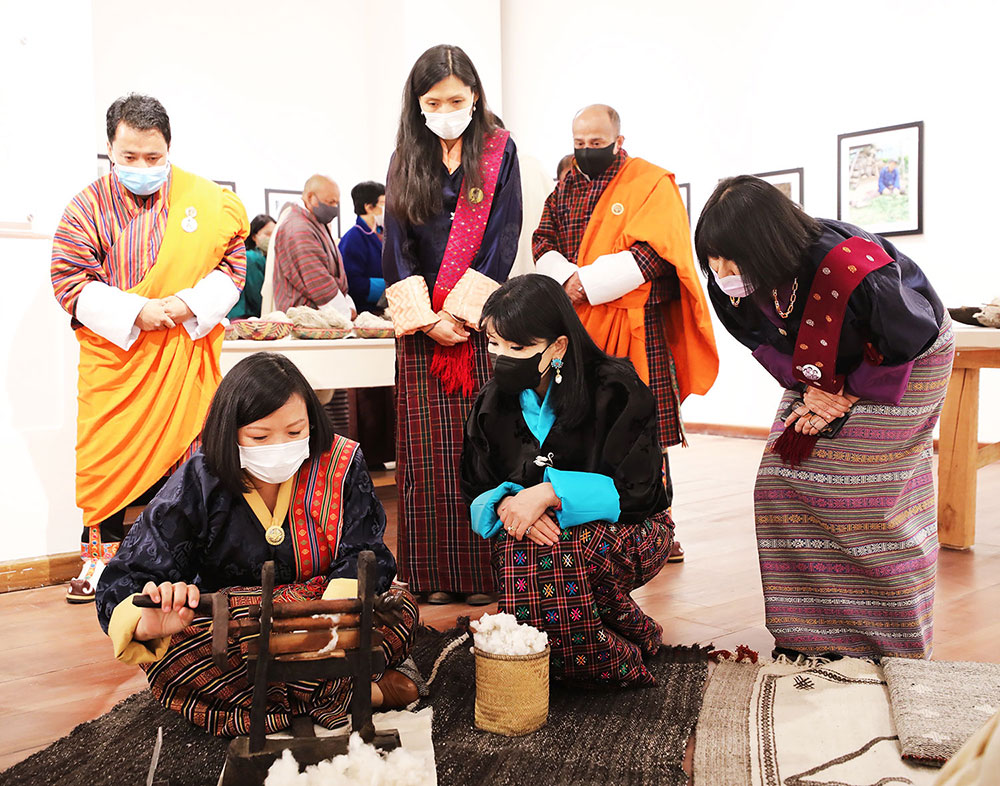Thinley Namgay
Iron Female Ox year-culture: The year 2021 witnessed significant developments in the areas of Bhutan’s culture and tradition.
In October, the Department of Culture identified Nobgang village in Punakha as an important cultural site. The village has a unique house designs, locally known as Kabu-Dharcham.
This pilot project is expected to bring other relatively unknown historical sites into the limelight.
Bhutan also added one new museum to its list. In July, the National Library and Archives of Bhutan opened a traditional print heritage museum in Thimphu.
The museum is expected to help preserve the traditional printing culture that includes the art of paper making, calligraphy and woodblock engraving, among others.
Dzongs play an essential role in preserving our culture and tradition.
October saw the installation of the much-awaited sertog (golden pinnacle) of the utse (centre tower) on Lingzhi Yue-Gyal Dzong.
Leytshog Lopen of the Central Monastic Body, Sangay Dorji, presided over the installation ceremony. Coinciding with the ceremony, the newly built Thongdrel of Zhabdrung Phunsumtshogpa has been consecrated.
Lingzhi Dzong, located about 4,300 metres above sea level, showcases authentic Bhutanese architecture. The third Druk Desi Chogyal Minjur Tenpa built the dzong to commemorate the victory over a Tibetan invasion in 1668.
Lingzhi Dzong used to house both the drungkhag administration and monastic body until it was damaged by an earthquake in September 2011. The reconstruction works on the dzong began in March 2018.
The year 2021 saw a boom in textile-related activities in the country.
One of the main activities in 2021 was an exhibition called “Hingtham: Weaving from the Heart, A Capsule Collection”, in December. An exhibition was launched by Her Majesty the Queen Mother Sangay Choden Wangchuck at the Royal Textile Academy in Thimphu.
The exhibition showcased products made from local textiles such as rugs, cushion covers, futon mats, and shawls. Raw materials to make natural dye and fibres, and looms were also on display.
Designers, textile companies, and civil society organisations representing over 200 artisans in Bhutan participated in the exhibition.
The first South Asian Association for Regional Cooperation (SAARC) children’s day was held at the Royal Academy of Performing Arts in December in Thimphu. Close to 70 students from Thimphu were engaged in the celebration. Traditional games such as archery, khuru, sogsum, and shotput were introduced to the students.
The SAARC children’s day marked the importance of imparting Bhutanese culture to the younger generations.


